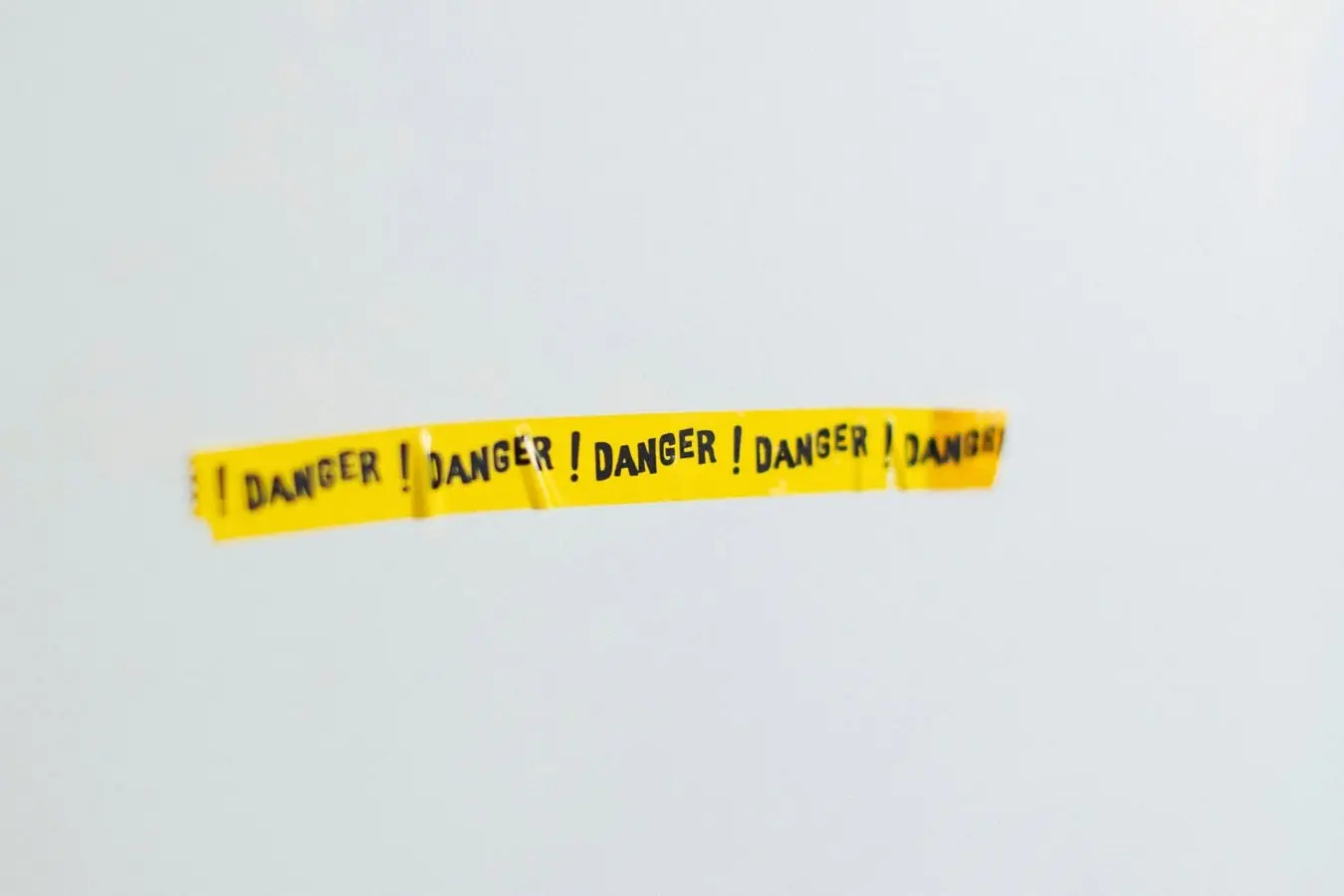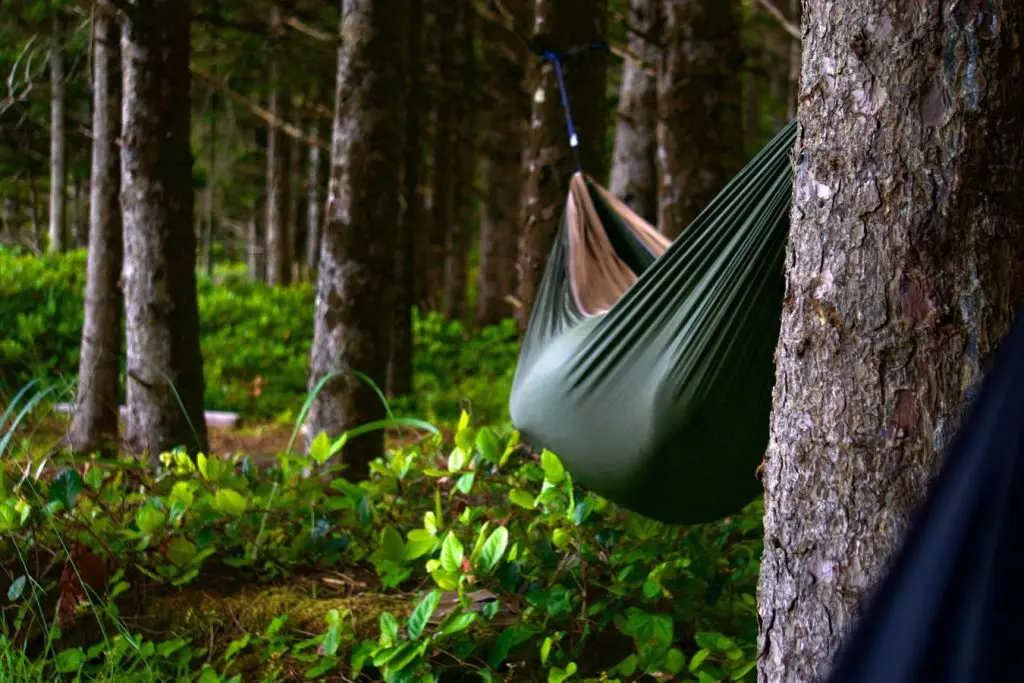The night speaks its unique voice and drifts around the forest on a cool breeze. Overhead is the infinite. Your body is cradled in a hammock, bug net hung over to keep the mosquitoes at bay. This is where sleep comes to find you if you are a hammock camper.
Of course, you are in the woods, far from society, far from help. There is no paradise on earth without a few risks. When it comes to hammock camping dangers, they can be avoided but you must know what you are facing first.
Predators
When you head into the woods you are entering a new home. While it might not look like a home it is in fact many homes. You could be strapping your hammock to the home of a bird or a chipmunk, you might be standing over the home of a groundhog. The woods are home to hundreds of species large and small.
There are a number of species that live in the woods that could become a threat for the hammock camper. Threats from predators can be avoided with just a few precautions. The problem comes when we start to weight our campsite and our desire to get basecamp setup over clear dangers or we do not consider those dangers.
One late spring afternoon we hiked into a beautiful backwoods’ campsite, however were running out of time to find a good spot.
After just a few minutes we found a campsite that was closer to a shelter than we usually camp but still within regulations. This little spot was near perfect but for one situation. Near the shelter it looked like one of the trash cans was destroyed and trash was spread all over the ground.
Now, there is a good chance that if we setup camp there we would have no issues at all, but this was clearly a bear sign. There was a bear in the area. We had food and we would hang it but there was still a risk.
Despite the time we left the spot altogether and moved to a different area entirely. We slept soundly.
If you can identify animal sign and follow the rules of the area that you are camping you can easily avoid the danger of predators.
Here are some signs to consider on your way to camp and while you are choosing a campsite
- Animal Tracks
- Animal Scat
- Smells
- Animal Paths
- PARK SIGNS (many people ignore posted signs at the parks or places they camp)
- Dens
- Bedding Areas
You can learn a lot about a site just by seeking out these signs. Avoiding campsites that have these kinds of animal signs will keep you safe from ever interacting with predators during your next hammock camping trip.
Widow Makers
It is hard to believe that there is one hammock camping danger that has such a clear and devious name. Literally, so many pieces of tree have fallen on men and killed them, while they were camping in the woods, that they have created a name for themselves.
Drift on that for a moment and you will never have trouble finding these things before they find you in the middle of the night.
Looking up when you are choosing a campsite will tell you all you need to know. The most dangerous widow makers are large fallen branches that have been hung up in the canopy above you.
A gust of wind or a short downpour could knock that large branch loose and it could come crashing down on your hammock.
A simple inspection of the trees you are tether too will tell you everything you need to know about that potential campsite.
You also want to look for dead limbs that are still attached to trees. These will be easy to identify because they will not have any new growth or leaves on them. These are just as dangerous as those branches hung up in the canopy.

Bad Weather
The weather can ruin everything! If you are a summer camper you have experienced one of those radical downpours that seemingly comes out of nowhere! Bad weather is one of the greatest camping dangers.
Lighting, rain, and wind are all capable of bringing down trees. These trees can block roads, paths or just fall on campers and crush them. Flash floods can turn a nice campsite into a river or can trap you on an island. The weather can be a bitch, to be frank.
Paying attention to the forecasts is essential. Of course, you must pay attention to where you are going and not where you are. If you are driving one hundred miles in another direction and traveling higher in elevation, everything changes! Its almost always colder and things can be very unpredictable at altitude.
If you are going to try your hand at hammock camping in the rain, there are some things you can do to be prepared for that. Of course, you must know it’s coming.
Cold Temperatures
Cold temperatures could be considered bad weather; however, you can face some dangerously cold temperatures even when the daytime weather is beautiful. You could also make some bad moves during the day that make those cold temperatures even more of a danger.
The most common mistake people make is assuming that the nighttime temperature of where they are currently will be the same where they are going. Again, this is a conversation of elevation. It could be as much as 20 degrees cooler, or more, even in a slight elevation.
Hammock camping in the cold weather is not a problem but it can be dangerous if you are not prepared for the weather.
Imagine starting your hike up to the basecamp in shorts and a tee shirt. At ground level its in the mid-70s. As you head up in elevation you reach a stream that must be crossed. It seems shallow but you wind up falling in because the force of the water and the slippery rocks.
As the afternoon turns to evening and you increase your elevation you begin to realize you aren’t going to get dry. The temperatures are now down into the 50s and you are getting cold. Where you are headed the temperatures will bottom out in the low 50s or upper 40s. That is a problem. That is hypothermia.
Packing for the cold weather is not hard and it can include a good wool blanked and some hammock insulation. You might even want to heat up some water in your canteen. Wrap it with a shemagh and stick that in your belly to keep you warm. Put another near your feet.
Poisonous Plants
There are several plants out there than can ruin a camping trip. The worst of these is poison ivy and oak. If you spend a day moving through the backcountry there is a good chance you will encounter some of this ich inducing foliage. If you cannot identify it then you will not be able to avoid it.
The bad news is you won’t be itching right away but by nightfall you could itching up a storm. Your body might be covered in that nasty rash and sleeping might be near impossible. It is vitally important to be able to identify wild plants both from the perspective of danger but also benefits.
There is a plant called spotted touch me not or jewelweed that can be crushed and rubbed on the skin to alleviate the effects of things like poison ivy. Get to know your weeds!
Faulty Equipment
When you are hanging a hammock there is probably nothing more dangerous than faulty equipment. Of course, you should never hang your hammock too high. Still, shoddy equipment is always going to be an issue and you cannot know when it will fail you.
Even a short fall to the ground can be extremely dangerous when you are sleeping. While the grounds of the campsite might appear safe your head could hit a rock as it falls to the ground. You do not want to wake up groggy, with a fractured skull, miles into the woods.
The best way to assure your equipment works and is up for the job is to put it to the test. Be sure that you test your setup before you head out into the woods.
Also, buy from reputable suppliers. That makes all the difference. There are a lot of hucksters out there!

Poor Preparation
Of course, preparation is everything when it comes to avoiding hammock camping dangers. The more you know about your trip, the weather, the season, the terrain, and the gear you are using, the harder it will be to run into these dangers.
You have all the power when it comes to deciding where and how your hammock camping trip will go down.
Poor preparation will give you little time to setup, put you in an environment you don’t know well and could even effect what you carry into camp.
I remember rushing a camping trip and forgetting my tent poles! No tent, no hammock, just a sleeping bag on the ground. It was a night to remember. Luckily, it didn’t rain!
Falling
Anytime you are hanging between trees there is the chance of falling. Falling is a big deal. Your reaction to a fall can be just as dangerous as the fall itself. You can tweak your back twisting to break your fall, you can twist your ankle depending on the direction of the fall. Either way, falling from a hammock or falling on a hike can turn into a huge problem.
If you are 10 miles into the backcountry and you must hike out on one leg, that is going to be a big issue.
This hammock camping danger goes back to having sound equipment. You should also carry around a field manual for basic wilderness first aid. Bushcraft First Aid by Dave Canterbury is a great resource to slip down into a backpack.
Conclusion
In most cases your hammock camping trip will go off without a hitch. However, if you run into any of these hammock camping dangers it can ruin a trip or worse. No one intends to put their life at risk when they head into the woods.
A few simple steps before, during and an even after your next hammock camping trip will assure that you stay safe and enjoy the great open wild.
Related guides
How To Find The Best Hammock Rain Fly
Best Hammock Sleeping Pads For Summer And Winter
Hammock Camping Under Quilts vs Sleeping Pads




